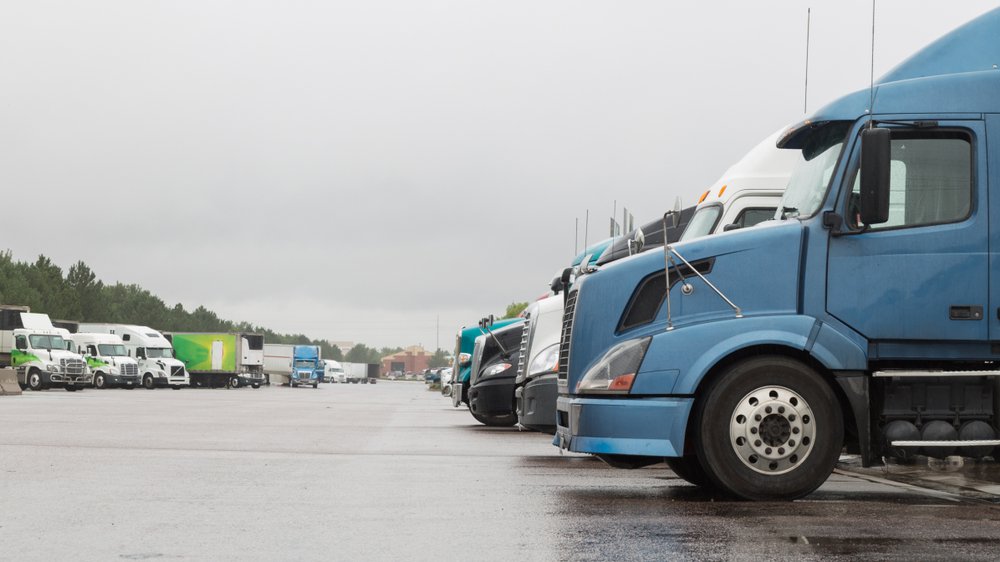The freight industry is the backbone of America’s economy. Without the ability to ship goods from one point to another – safely, quickly, and consistently – everything else would fall apart. Freight brokers (also known as truck brokers) connect people who want to ship goods with people who transport goods. They’re an essential intermediary.
Their services are also in high demand: The American Trucking Association estimates that freight volumes will grow by 36% by the early 2030s. Successful freight brokers can expect rising demand for their services and generous compensation as well, making this an attractive employment option. If you’re considering getting a freight broker license and bond, follow the steps outlined below to kickstart your career.
Step 1: Understand the Freight Broker Bond
Before embarking on a career as a truck broker, you must know what’s involved. Do extensive research into the daily responsibilities, speak to a working (or retired) professional if possible, and consider the long-term prospects.
You should also familiarize yourself with some of the requirements you will encounter in later steps. Specifically, you need to understand how broker bonds and freight broker licenses work before applying for one and committing to a surety bond agreement.
Here’s the basic rundown of how freight broker bonds work:
- Unlike insurance, which protects a policyholder, this and all other types of surety bonds hold one party accountable for damages caused to another party.
- If a freight broker fails to follow applicable rules and regulations, the Federal Motor Carrier Safety Administration (FMCSA) may file a claim against the bond seeking damages equivalent to the harm caused by the carrier.
- The surety agency that backs the freight broker bond guarantees a settlement payment for all valid claims, after which they will collect that same amount from the freight broker who has the financial liability under a bond agreement.
- The bonds create a powerful disincentive to break the law, which is why the FMCSA requires a freight broker to have one before granting them a license to operate legally.
Step 2: Set Up Your Business Structure
Every business owner, freight broker or otherwise, needs to decide how they will structure their business at the outset. Different structures have different pros and cons. It can be very helpful to consult with a lawyer or accountant at this phase to ensure the structure aligns with the long-term business goals.
The three most common business structures are:
- A sole proprietorship.
- A partnership.
- A corporation.
Eager as you might be to get down to business, don’t rush through this step. Take the time and use whatever resources are necessary to structure the business advantageously.
Step 3: File an OP-1 Form
Before proceeding with the freight broker license application process, you will need to submit an OP-1 form. This is an application form for a motor carrier number that is submitted to the FMCSA. This number is required and will distinguish you from other carriers.
You can submit the form online and receive the number immediately or mail in the form and wait (usually 4-6 weeks) to get a number. The form requires basic information about your business and background, along with an application fee ($300 at the time of writing).
Step 4: Obtain a Freight Broker Bond
A freight broker bond must be issued by a qualified surety in the amount required by the FMCSA. Currently, freight brokers need a $75,000 surety bond, meaning the surety that backs the bond agrees to settle claims up to but not exceeding that amount.
There are many surety agencies able to write these bonds, but the cost and service quality can vary widely, so it’s important to find a quality agency upfront – one like Viking Bond Service.
You will need to apply for the surety bond by:
- Submitting a completed application.
- Agreeing to a credit check.
- Supplying any other documentation the surety requests.
After reviewing your documents and estimating your risk (e.g. how likely you are to cause claims), the surety will quote you the cost of the surety bond. Expect it to be a small percentage of the bond total – less or more depending on your credit.
Bad credit – a low credit score or a spotty financial history – makes it harder to get a bond. Fortunately, Viking Bond Service created a unique bad credit surety bond program designed to help more people get the surety bonds they need at a fair price.
Step 5: Pick a Process Agent
A process agent is someone who receives court documents on behalf of the freight broker. Under law, freight brokers must have a process agent in every state where they have an office or write contracts.
Some freight brokers have different agents in each state, while others rely on service providers that can supply nationwide coverage. Either way, you must pick the agent(s) and designate who they are on Form BOC-3 before submitting it to the FMCSA.
Step 6: Register the Business and Obtain Your Freight Broker License
For the final step, every freight broker must register with the Unified Carrier Registration: A national database of registration and financial liability information. The FMCSA will not issue a freight broker license until a broker can demonstrate registration. Once registered, you may finally achieve your goal of becoming a freight broker.
Viking Bond Service – Serving Freight Brokers Everywhere
Now that you know how to get a freight broker license and freight broker bond, you also understand that they can be harder to obtain than other types of surety bonds. It can be confusing to make sense of everything the agreement entails. That’s why freight brokers across the country choose Viking Bond Service as their long-term bonding partner.
We make things easy from beginning to end and offer competitive rates to all applicants. To get the process started, complete our online application at your convenience. You can also get more information from our team before applying. Call us at 1-888-278-7389 or contact us in writing.


